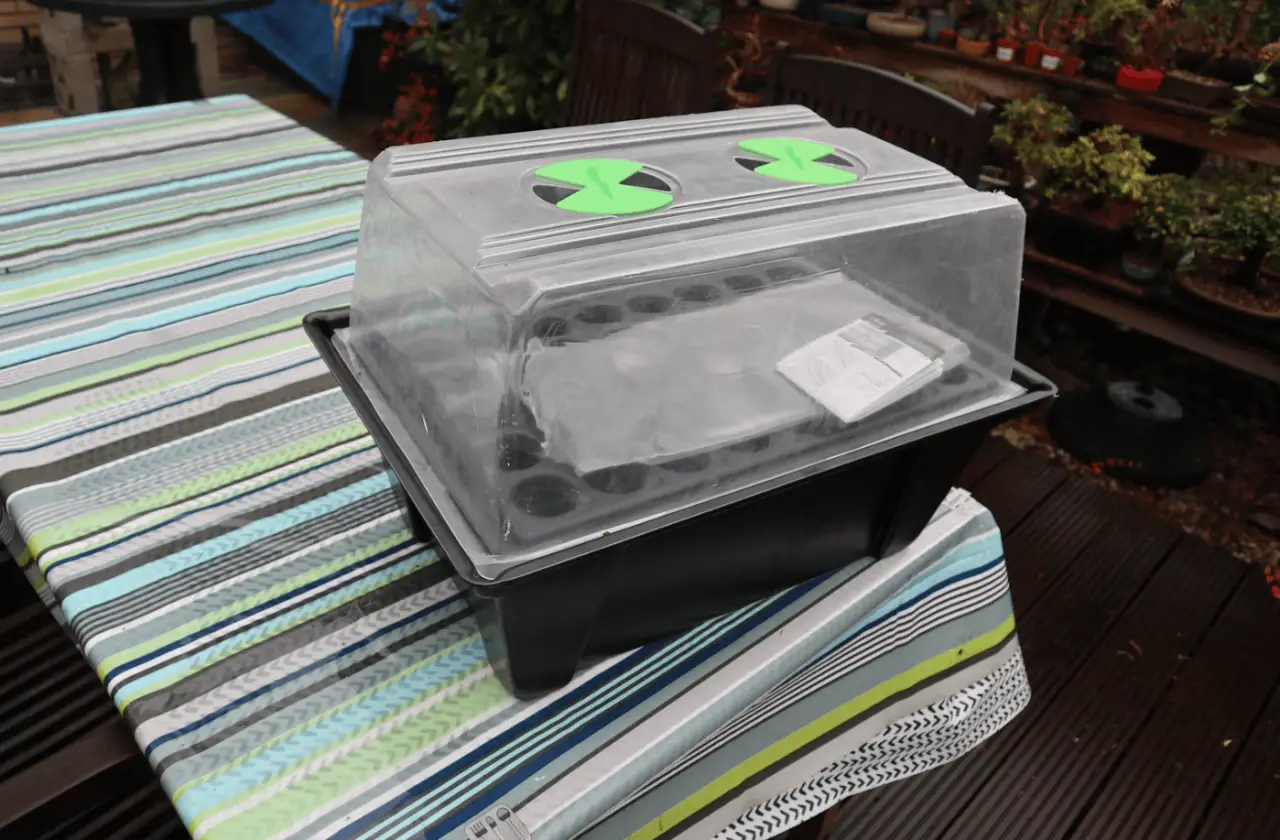How to use a propagator.

A propagator is an essential tool for gardening and particularly for annual vegetable growers who wish to grow their own plants from seeds. If you’re looking to learn how to use one of these nifty tools for the upcoming season, then you’ve come to the right place.
What is a propagator?
A propagator is a tool that helps to create the perfect conditions for seed germination and early growth, they’re essentially seed trays with a small cover that fits over the top. Like a mini greenhouse.
By providing warmth, humidity, light, and ventilation, a propagator can significantly improve the chances of successful seed germination and help accelerate the growth of seedlings. In this blog post, we will explore the various ways of using a propagator and the benefits that it offers to gardeners. They can even be used to start your plants off when you might still be in the Winter season, especially in the UK – maybe to grow some of the plants we discuss in our winter vegetable growing blog.
Heated Propagators
One of the primary ways to use a propagator is through soil heating. An electric version will come with a built-in heat mat or heated tray that warms the soil and helps germination. This is particularly useful for seeds that require higher soil temperatures to germinate, such as tomatoes, peppers, and aubergines.
By providing the right amount of heat, they can greatly increase the chances of successful seed germination and accelerate the growth of seedlings. Though don’t start off too early in the season because early growth can lead to leggy seedlings that then suffer further down.
If you have an unheated version then don’t worry, these are perfectly good at retaining heat when placed in sunlight and you can always buy the heat mat separately.
Humidity Control
Another way to use a propagator is through humidity control. Many come with a lid or cover that can be used to create a humid environment for seeds to germinate. This is particularly useful for seeds that require high humidity, such as chillis or even ferns.
When you provide the right level of humidity, the tool can help to speed up the germination process and improve the chances of successful seed germination. It also helps by retaining moisture which then drips back down to the soil and keeps the seedlings with the right amount of water.
Light Control
Light control is another important feature of a propagator. Some come with built-in lights that can provide the right amount of light for seed germination and early growth. This is especially useful for those in the northern hemisphere that have short days still in February and March when you’re looking to start growing.
Ventilation
Ventilation is also an important aspect of using a propagator, especially with the amount of moisture a propagator can create! By adjusting the vents, you can provide the right amount of fresh air and ventilation, which is necessary for seed germination and plant growth. In turn, this also stops things like mould and mildew which can easily scupper your growing by rotting seeds or even freshly germinated seedlings.
Propagator Benefits
There are many benefits to using a propagator in gardening. One of the primary benefits is consistency. The small greenhouses provide a controlled environment for seed germination, which can lead to more consistent results. This is especially useful for seedlings that need specific conditions to germinate and grow. By providing the right conditions, a propagator can help to ensure that seedlings germinate and grow consistently, which can lead to a higher success rate and better yields.
Another benefit of using a propagator is speed. A propagator can speed up the germination process by providing the ideal conditions for seeds to germinate. This can lead to faster growth and a shorter time to maturity. By accelerating the growth of seedlings, a propagator can help gardeners to harvest their crops sooner and enjoy the fruits of their labour in a shorter period of time.
Protection is another benefit of using a propagator. A propagator can protect seedlings from the elements, such as cold temperatures and strong winds, which can be especially useful in the early stages of growth. By providing a sheltered environment for seedlings to grow, a propagator can help to ensure that seedlings have the best possible chance of survival and thriving.
Lastly, a propagator can be a space-saving solution. It can be used to start seeds indoors, which can save space in a garden or greenhouse. This can be especially useful for those with limited outdoor space or for gardeners who want to start their seedlings earlier in the season. By starting seeds indoors in a propagator, gardeners can ensure that seedlings are ready to be transplanted into the garden or greenhouse when the weather is ideal. This can lead to earlier harvests and a longer growing season.
Conclusion
In conclusion, a propagator is a valuable tool for any gardener who wants to grow their own plants from seeds. It can provide the ideal conditions for seed germination and early growth, which can lead to more consistent results, faster growth, and better yields. They can also protect seedlings from the elements and save space by allowing for indoor seed starting. Whether you’re a seasoned gardener or just starting out, a propagator is an essential tool for successful seed germination and early growth.






